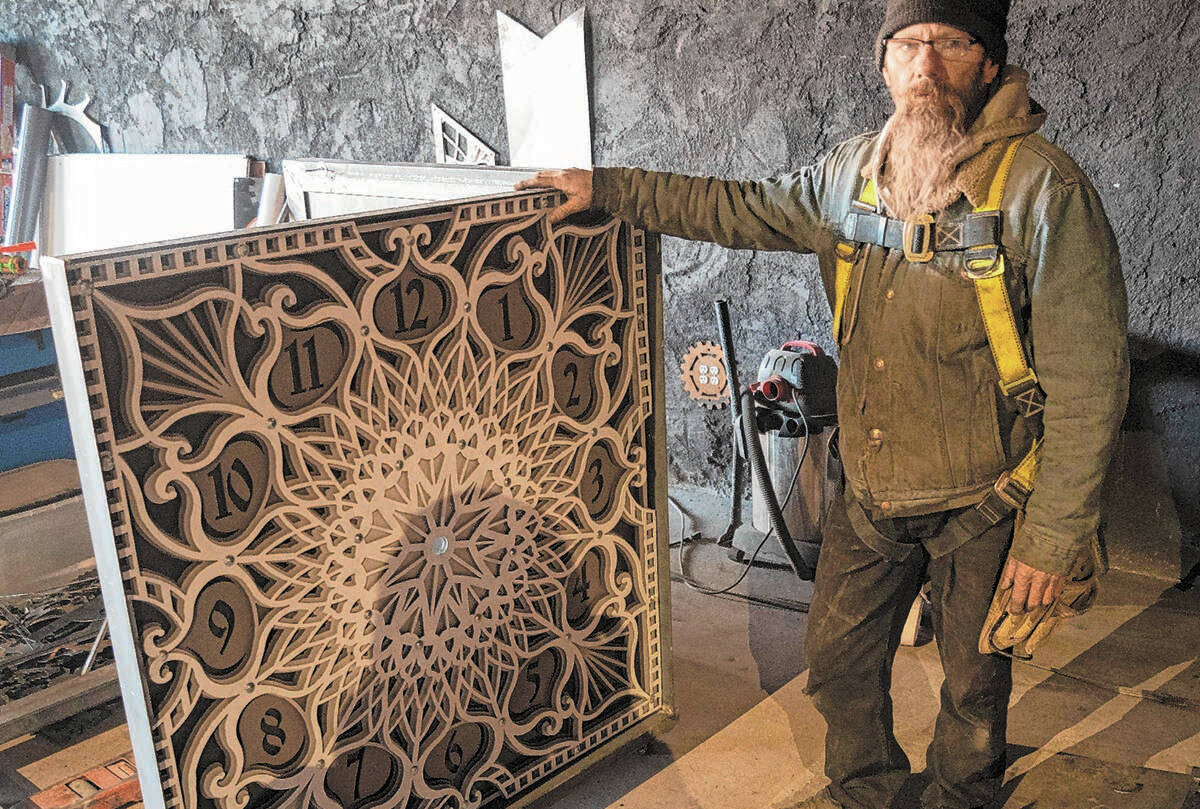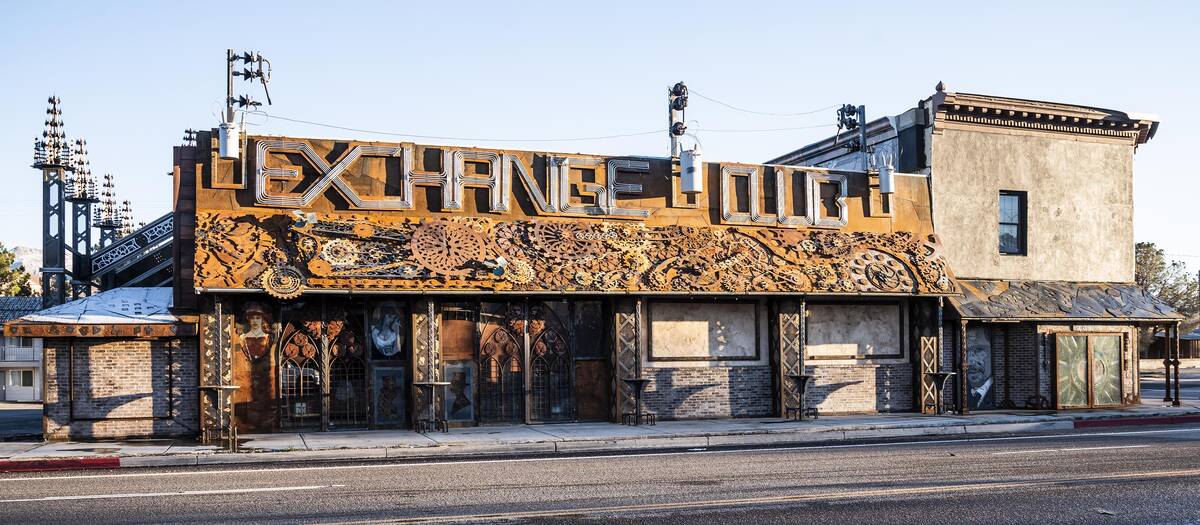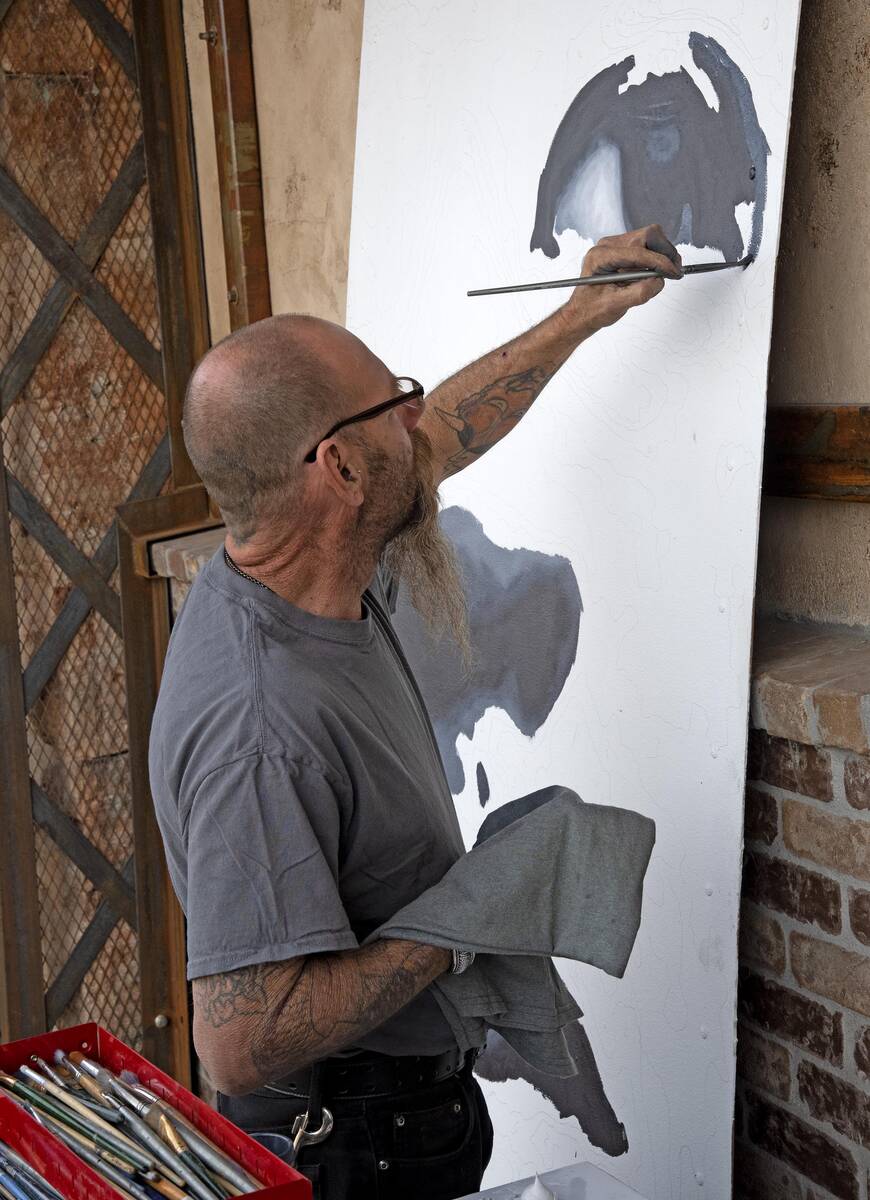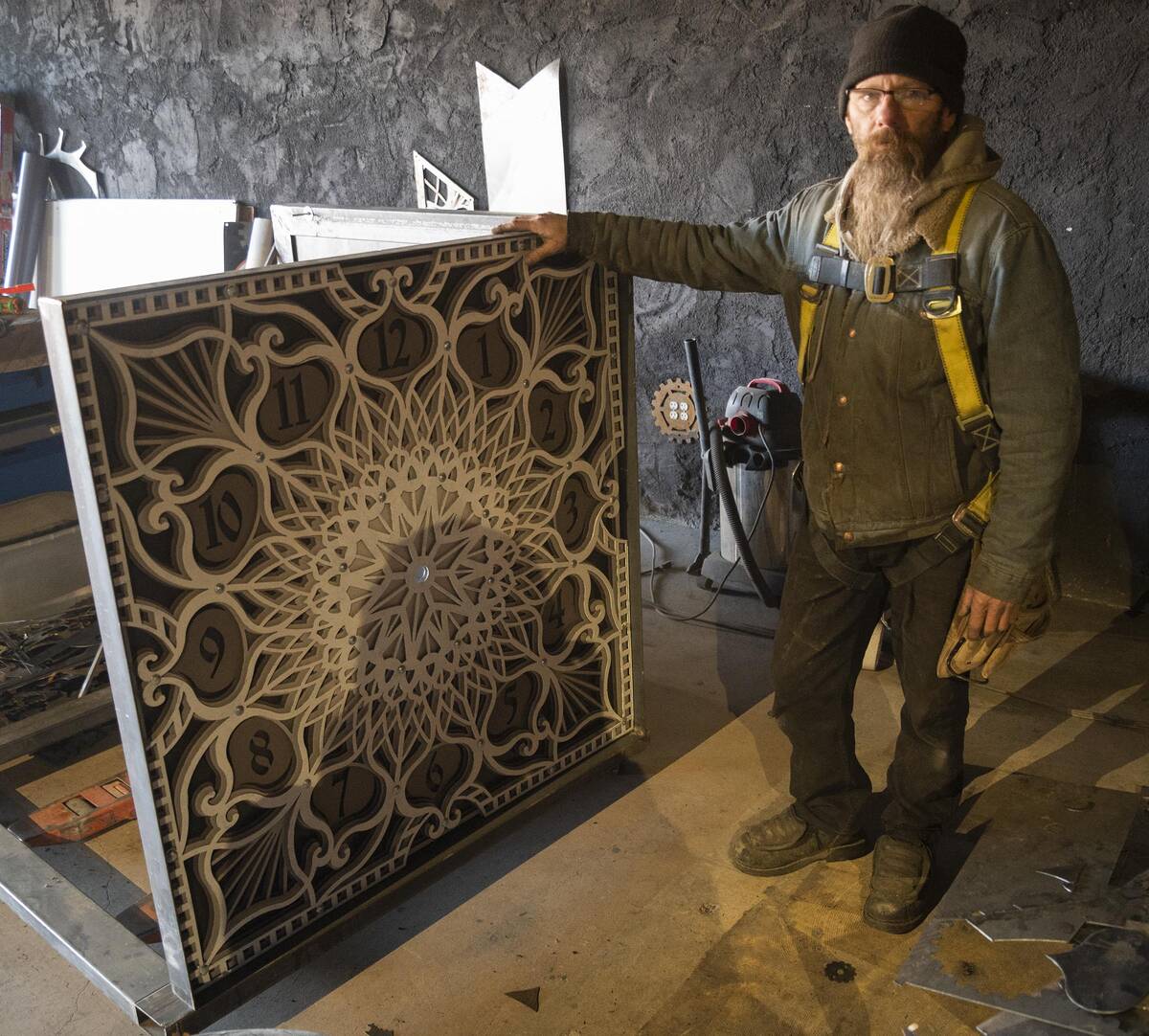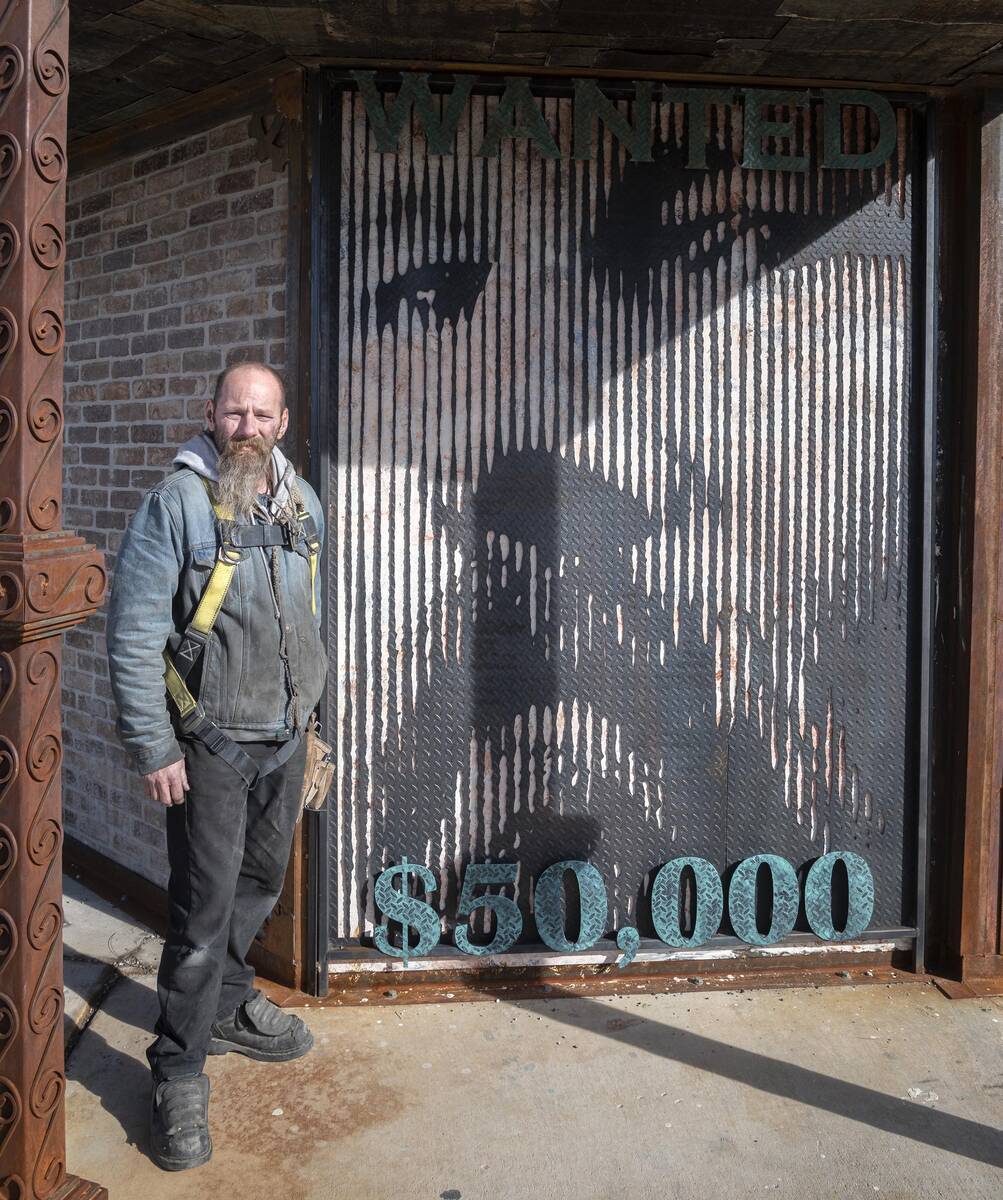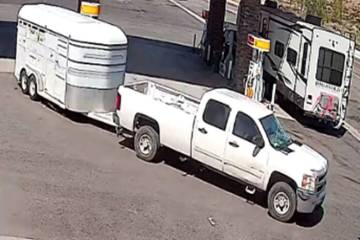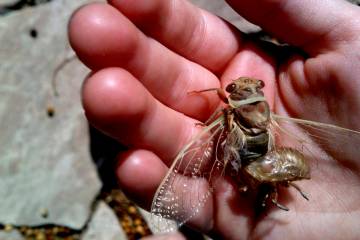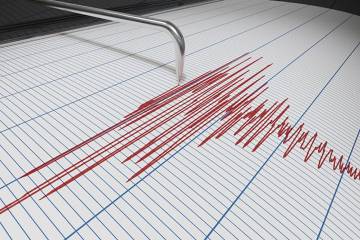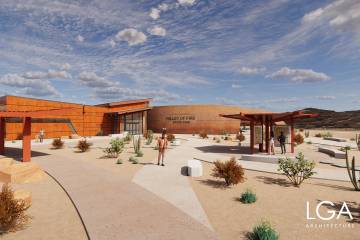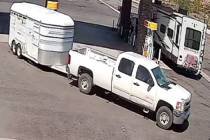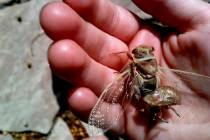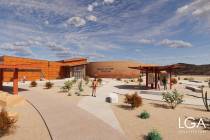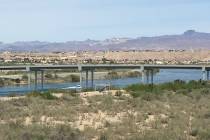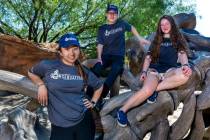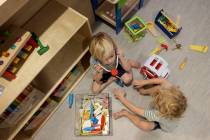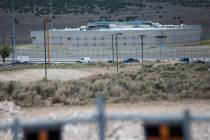Artist helping transform Beatty building
BEATTY — James Henninger is the most wanted man in town, at least if you believe the image on the Exchange Club at the main downtown corner. It’s an oversized “wanted poster,” featuring the artist’s self-portrait and offering a “reward” of $50,000.
When developer Ed Ringle was searching for an artist to help him realize his vision of transforming the venerable property into a steampunk-themed casino and coffee shop, Henninger, a fixture in the Las Vegas art scene, turned out to be his man.
Henninger, who grew up in Southern California, says he’s been in love with art and making it in one form or another for 50 years, since being mesmerized while watching a babysitter doing drawings when Henninger was 3 years old. He says he couldn’t imagine doing anything else.
The artist loves the creative freedom that Ringle has given him in the Exchange Club project. He is able to allow his imagination to guide him and finds that inspiration can happen at any moment, as when one of his biggest ideas came while he was eating at Smokin’ J’s Barbecue next door.
That idea, approved by Ringle and now under construction, was to create a Victorian-era steampunk railroad station on the north side of the building. The completed station, with flying buttress arches and lighted columns, is planned to feature full-size, high-relief models of a couple of railroad cars and a locomotive, with the existing entrance becoming a ticket office.
Work is also underway for a 25-foot bell tower, with four ornate clock faces, to be located next to the ticket office.
The front of the building is mostly complete. The other side is planned to feature a mural by Las Vegas artist Jennifer McCarty.
Henninger’s design calls for a lot of intricate metal parts in the shape of cog wheels and lace-like lattice. They are being cut on site with a large computer numerical control plasma cutter.
Henninger says that it will take about another year and a half to complete all the work outside and inside the building.
In his other work, the artist has used a wide variety of media. For years he devoted himself to drawing, especially in pen and ink (he made his own ink and paper) but has since been more interested in painting.
When he didn’t have the money for art supplies, Henninger discovered that he could buy samples of acrylic house paint at Lowe’s, and he used that. Unable to afford artist’s brushes, he resorted to painting with his fingers.
Now he uses real art supplies, and a favorite medium is encaustic, which is painting with molten wax. He has posted videos of the technique on his Facebook page.
Henninger enjoys painting in front of an audience, which he does when possible. “That way people don’t just enjoy the piece; they can enjoy the process. And it’s a way to meet new people,” he says.
Although he admires and has been influenced by the work of many artists — among them Norman Rockwell, Albrecht Dürer, Leonardo da Vinci, and Marc Chagall — Henninger has no formal training in art.
“It’s all practice,” he said.
“Although I admire various schools of art, including the impressionists,” he said, “I am reluctant to have my work categorized; I feel this limits the artist as well as the work.”
He suggests that, if there were an “-ism” to describe his style, it might be called “Emotionalism.”
“I paint with my emotions, and each painting reflects my drive and energy.”
Asked why he became an artist, he says, “I love that art has no boundaries and anything is possible.” He finds art to be a means of learning about the world and about cultures — his own and others.
Henninger plans to become a long-term Beatty resident. Ringle is building a living, studio, and exhibition space for him and plans to have 10 such spaces to house an artists’ colony in Beatty.
Richard Stephens is a freelance reporter living in Beatty.



